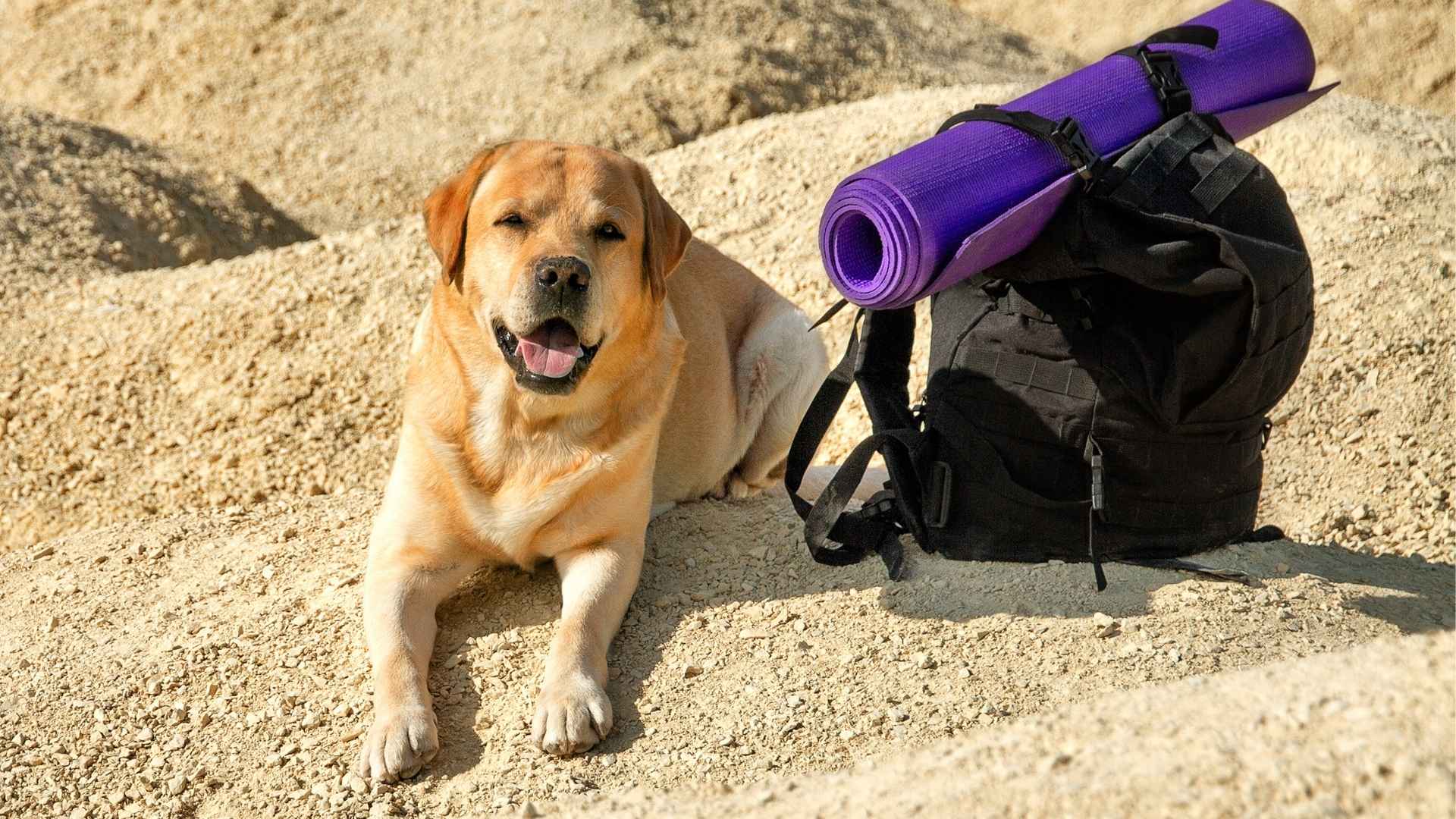Hiking in the great outdoors is a rewarding way to bond with your dog, but when the temperatures rise, not every breed is built for the extreme heat. If you live in a warm region or plan to hit sun-drenched trails, it’s important to choose a dog that can handle hot climates with ease. While all dogs need protection and care in high temperatures, some are naturally better suited to warmer environments thanks to their physical makeup and historical origins.
Certain breeds, especially those with short snouts or thick double coats, struggle in the heat, making hiking more risky than fun. On the flip side, other dogs thrive in hot weather and can keep pace on long treks without overheating. These dogs often have lean bodies, shorter coats, and a natural ability to stay cool during strenuous activity.
This article highlights dog breeds that make ideal hiking partners in hot climates. If your adventures lead you through sunny landscapes and dusty trails, these breeds won’t just keep up, they’ll thrive right alongside you.
Dog Breeds For Hiking In Hot Climates
1. Basenji
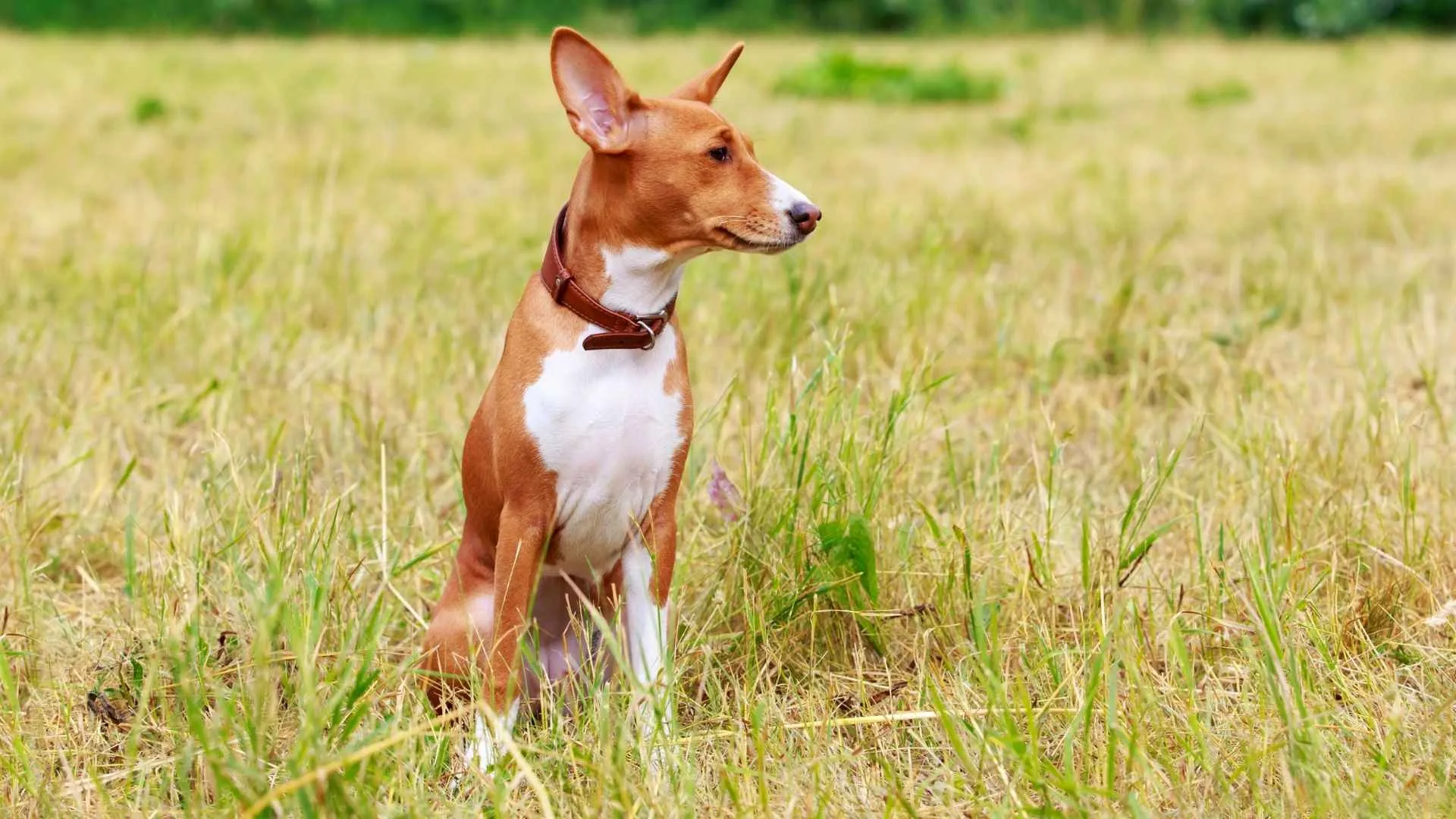
With roots in central Africa, the Basenji is built for heat and endurance, making it a top pick for hiking in hot climates. Its short, fine coat and lean build help the breed tolerate high temperatures better than most. WebMD describes the Basenji as a smart and self-reliant dog.
These dogs are agile, energetic, and thrive on outdoor adventures, especially when they involve exploring new scents and terrains. Whether you’re trekking solo or with fellow dog lovers, a Basenji’s curiosity and athleticism make every hike more exciting.
Care Needs
Basenjis are famously low-maintenance when it comes to grooming. Much like cats, they keep themselves clean by licking their fur, which means you’ll only need to give them a light brushing once a week.
Their lack of a strong doggy odor is a bonus, and baths are only necessary after messy outings. Keep nails trimmed and ears clean, and be sure to brush their teeth regularly. During hikes, always provide shade and water, as even heat-tolerant breeds need hydration and rest breaks.
Fun Fact: The Basenji is often called the “barkless dog” because of its unique larynx structure, which produces a yodel-like sound instead of a traditional bark.
2. Pharaoh Hound
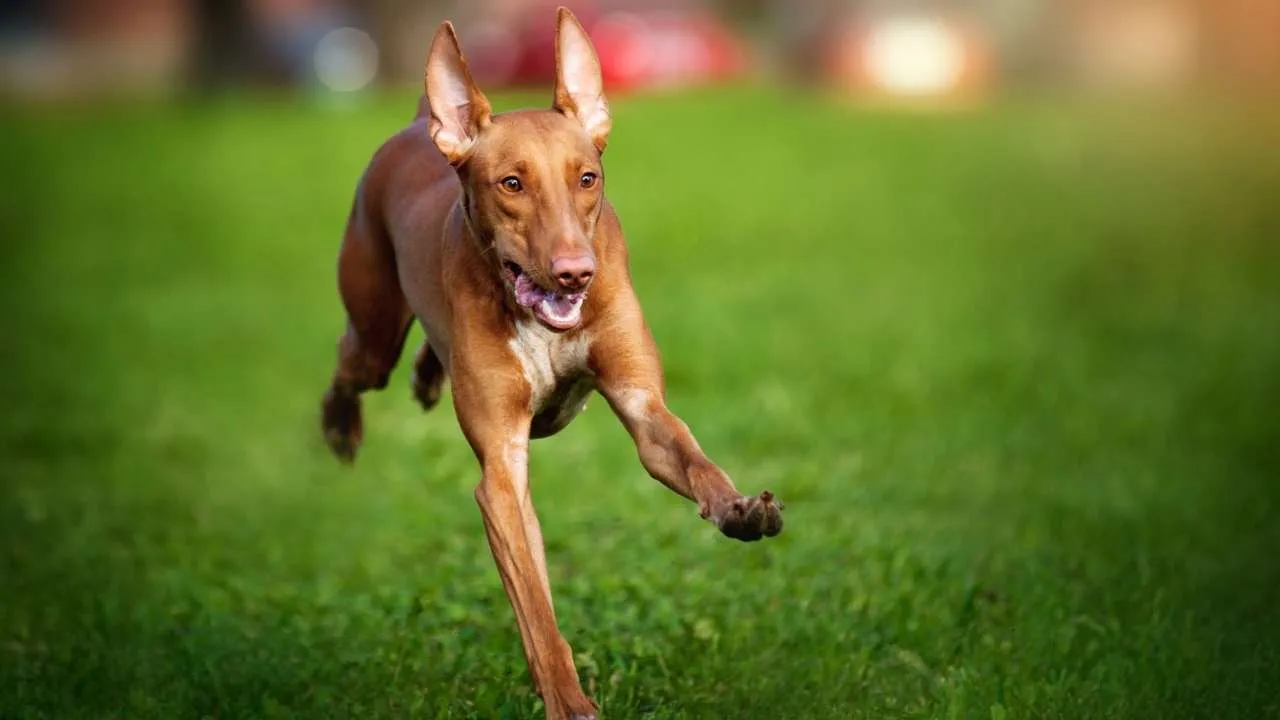
With roots tracing back over 5,000 years, the Pharaoh Hound is one of the oldest known dog breeds. Originating from the arid landscapes of Malta and ancient Egypt, these sleek, athletic dogs thrive in hot climates.
According to the AKC, the Pharaoh Hound is known for being sociable, intelligent, and dignified. Their short, light-colored coat helps reflect sunlight, and their lean build allows them to cool off efficiently, making them excellent companions for sun-drenched treks.
Care Needs
Pharaoh Hounds require regular, high-energy exercise and do best in homes with secure, fenced-in yards where they can safely sprint. Though affectionate and playful, their strong prey drive means they may chase after small animals if off-leash in open areas.
This intelligent breed is quick to learn but may struggle with recall, especially in distraction-rich environments. Their coat is easy to maintain, needing only occasional grooming. Due to their low body fat and minimal insulation, they aren’t suited for cold weather but excel in hot, dry regions.
Fun Fact: These intelligent dogs are known for their ability to “blush”, their nose and ears turn a rosy color when they’re excited or happy.
3. Ibizan Hound
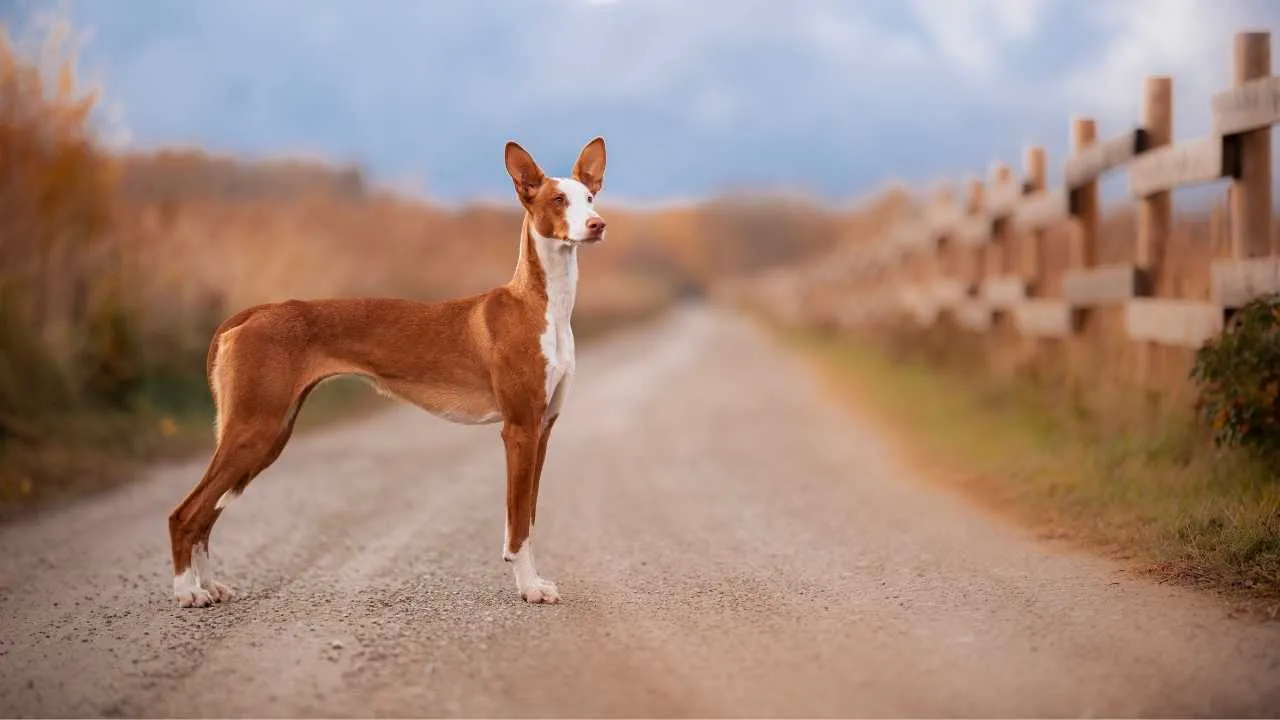
Its origins trace back to the sun-soaked Balearic Islands and ancient Egypt. This graceful breed boasts a lean, athletic build and oversized, upright ears that help regulate body temperature, making it an excellent choice for hiking in warm weather.
Agile and energetic, the Ibizan thrives on outdoor activity, whether it’s a long trail hike or a morning jog. PetMD notes that Ibizan Hounds are willing to please their owners, though they also have a reputation for being independent-minded.
Care Needs
To keep an Ibizan Hound happy and healthy, regular physical and mental stimulation is essential. Expect to dedicate up to two hours daily for exercise, including walks, runs, or active play. Because they were bred to work closely with humans and other dogs, they don’t do well with long periods of isolation.
Also, their strong hunting instincts and incredible leaping ability mean they should only be off-leash in secure, enclosed areas. Early training and socialization help manage their alertness and occasional vocal energy indoors.
Fun Fact: The Ibizan Hound’s ancestry dates back to ancient Egypt, and its jackal-like appearance echoes the imagery of the Egyptian god Anubis.
4. Vizsla
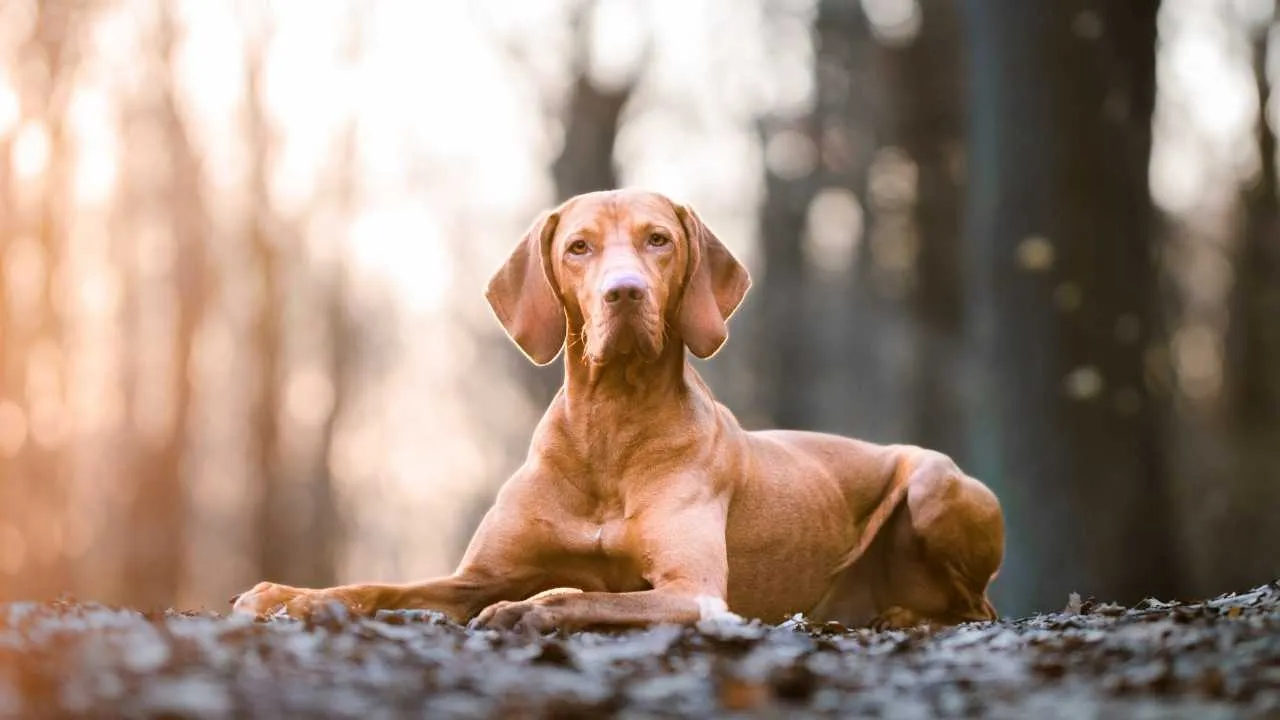
Bred for hunting and field work, this athletic breed thrives on daily outdoor activity and handles warm temperatures better than many, thanks to its short, low-maintenance coat. Purina describes the Hungarian Vizsla as a sturdy, dignified medium-sized dog.
Adult males have a wiry, thick coat and are known for their affectionate nature and high energy, making them ideal for lively, active homes.
Often referred to as a “Velcro dog,” the Vizsla forms close bonds with their humans and loves nothing more than tagging along on hikes, runs, swims, and any adventure that offers both movement and companionship.
Care Needs
Vizslas require a substantial amount of exercise, ideally 60 minutes or more each day. They excel at off-leash running but need safe, open spaces to do so. Their short, smooth coat helps them stay cooler in the heat, but precautions are still necessary: always bring water, take shade breaks, and avoid peak sun hours.
Grooming is simple, with occasional brushing and minimal bathing. They’re also prone to chewing, so providing rotating toys is essential. Gentle, positive reinforcement works best for their sensitive yet smart temperament.
Fun Fact: Despite being a hunting breed, Vizslas are known for their cleanliness and even groom themselves like cats.
5. Weimaraner
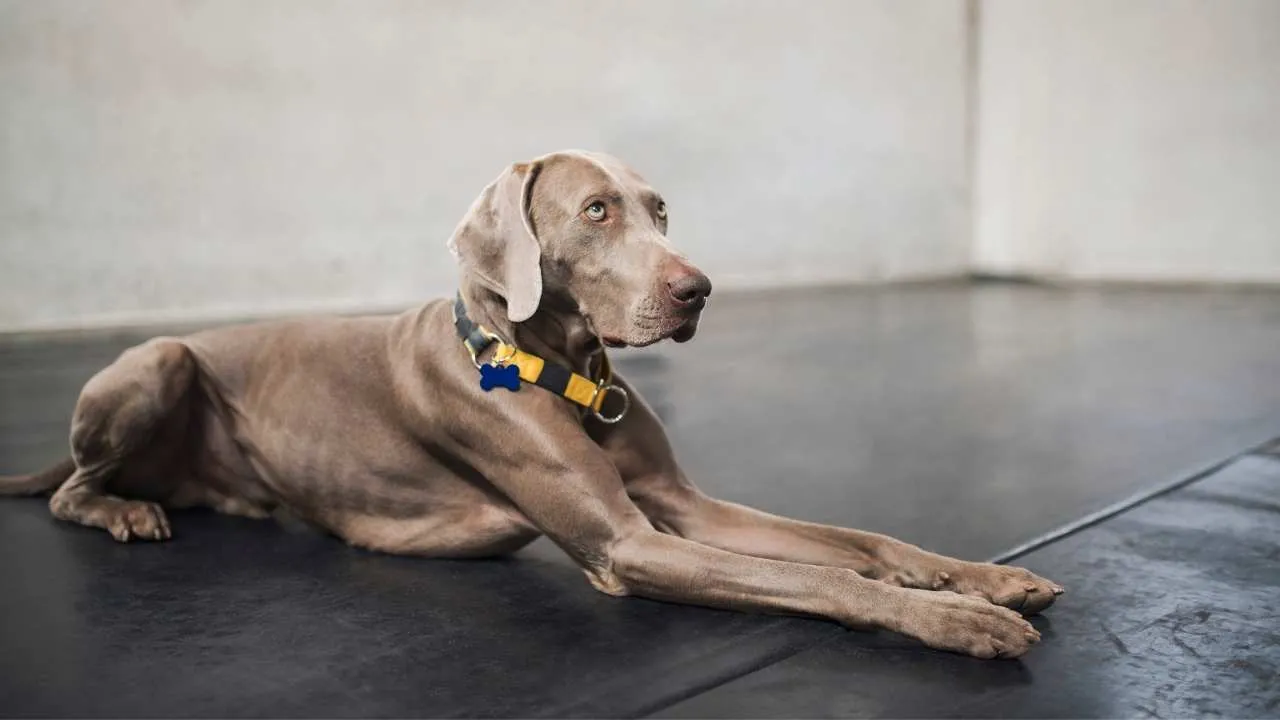
They have a sleek build and short, silvery coat. Originally bred in Germany for hunting, these athletic dogs are built for stamina, speed, and adventure.
Their large lungs and broad nasal passages allow them to manage physical exertion efficiently, even in warmer temperatures. Known as the “Gray Ghost,” Weimaraners are energetic companions who thrive on long outdoor excursions and close human interaction.
Care Needs
Weimaraners require regular, vigorous exercise to stay happy and healthy. A well-conditioned adult can manage hikes up to 20 miles and even handle marathon-level distances with training.
Their short, smooth coat is low-maintenance, but they do shed moderately. While they’re loving and obedient, they’re also prone to separation anxiety and need consistent mental and physical stimulation.
Owners should be prepared for a highly social dog that doesn’t like being left out of the action. Supervision is also advised around small animals due to the breed’s strong prey drive.
Fun Fact: The Weimaraner’s combination of a short coat, deep chest, and long limbs gives it a natural advantage when hiking in hot, dry environments.
6. Rhodesian Ridgeback
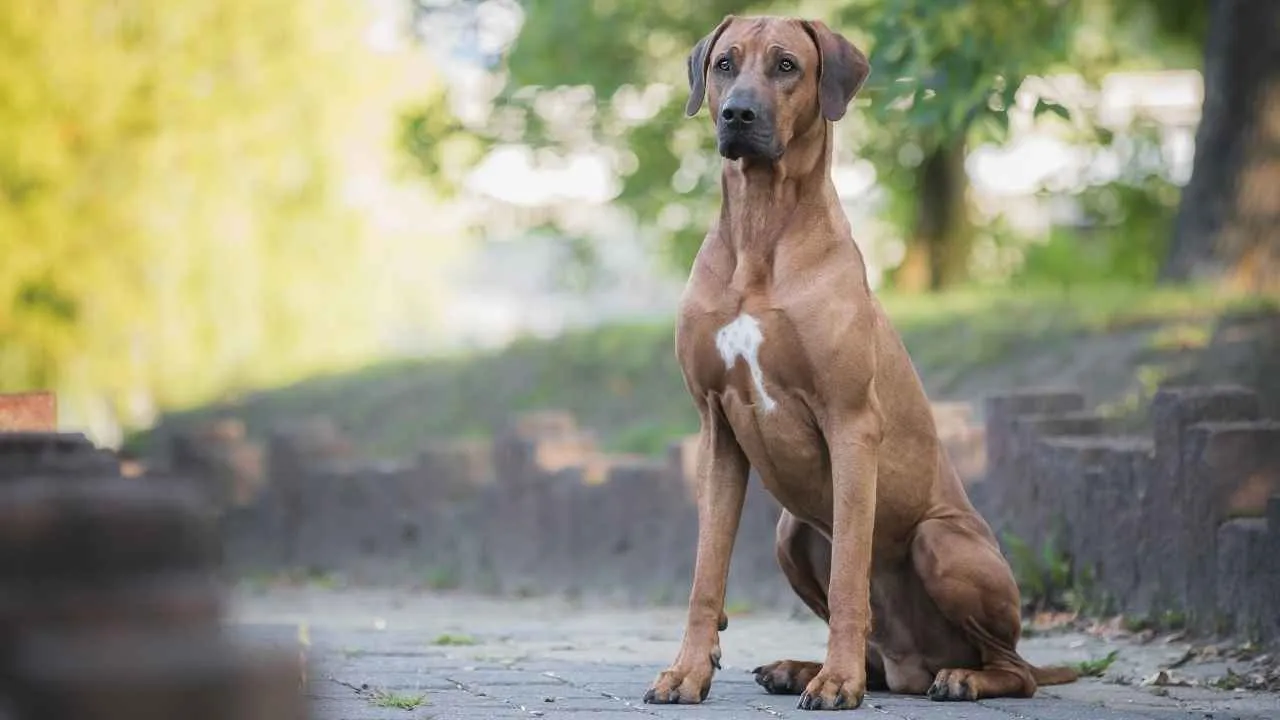
They are built for endurance and bred under the African sun. With a sleek, short coat and a strong, muscular frame, this breed naturally tolerates hot temperatures and thrives during physically demanding outdoor activities.
Known for their stamina and protective instincts, Ridgebacks are loyal partners who can tackle long trails, often covering 10 miles or more without tiring.
Care Needs
While their athleticism and heat resilience are impressive, Rhodesian Ridgebacks still need proper care on warm hikes. Always provide ample water and shade breaks to prevent overheating, and avoid peak sun hours when planning long treks.
Feeding should be well-monitored, as this breed can be prone to overeating and may develop food guarding behaviors. It’s recommended to divide meals to minimize the risk of bloat. Early socialization and consistent training help ensure they remain well-mannered trail companions.
Fun Fact: A fit Rhodesian Ridgeback can reportedly keep pace with a running horse, making them ideal for runners and long-distance hikers alike.
7. Chihuahua
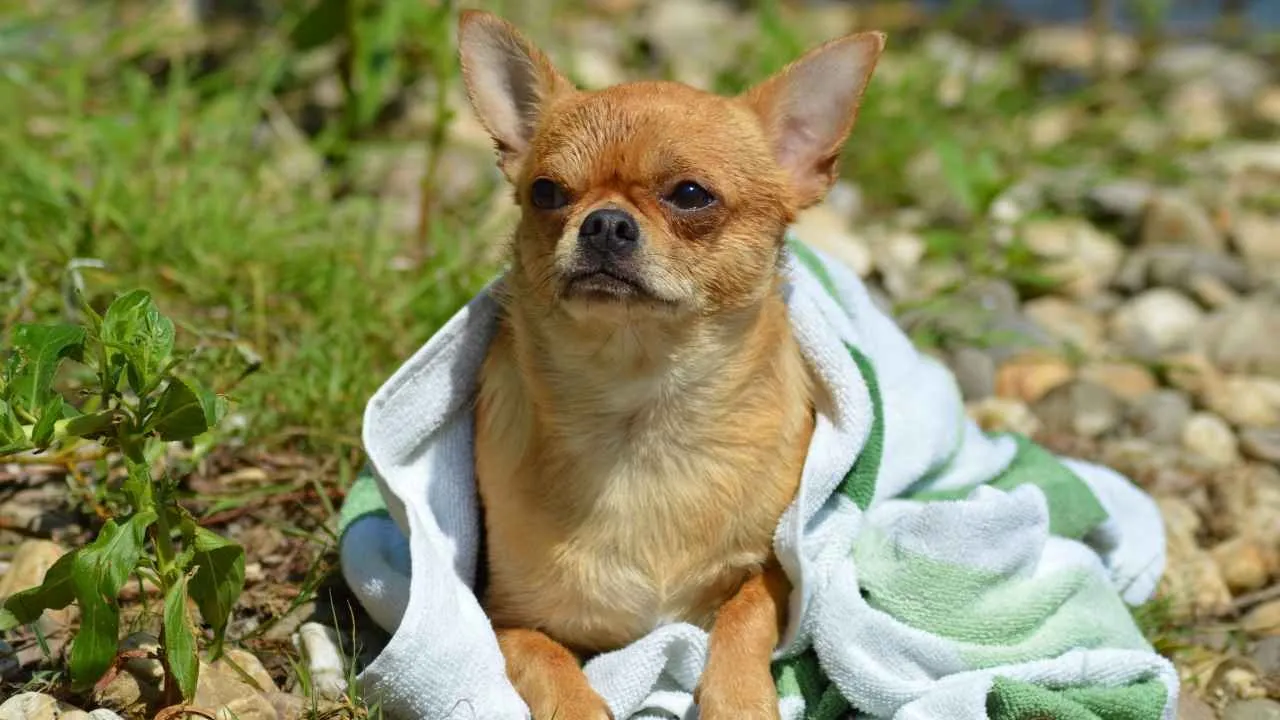
With roots tracing back to Mexico’s arid regions, this breed is naturally adapted to handle heat better than many other breeds.
Their compact size helps them cool down quickly, and both the short- and long-coated varieties offer enough insulation to manage sun exposure.
For adventurous dog owners looking for a portable hiking buddy in warm weather, the spirited Chihuahua might just be the perfect fit.
Care Needs
Despite their heat tolerance, Chihuahuas are still vulnerable to dehydration due to their small size. Always provide access to fresh water and shade during hikes.
These high-energy dogs thrive on regular exercise, but their stamina may not match larger breeds, so be mindful of pace and distance. Because they’re more sensitive to cold than heat, they’re ideally suited for sunny environments.
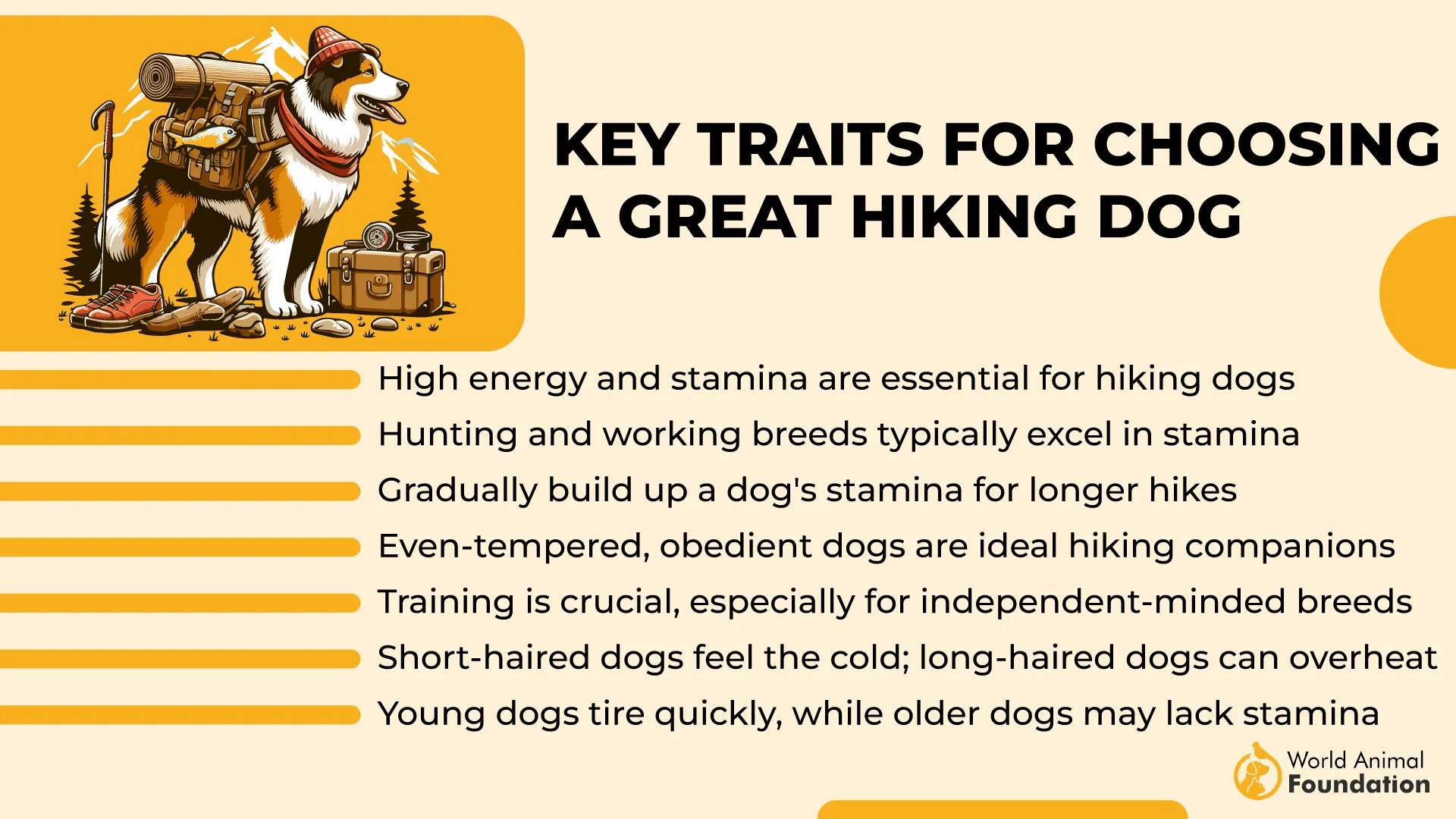
It’s also wise to monitor interactions with larger dogs on the trail, as these smaller dogs can be fearless, vocal, and unaware of their tiny stature.
Fun Fact: A Chihuahua named Chip completed Vermont’s 274-mile Long Trail, scaling rocky peaks with impressive agility and enthusiasm.
8. Australian Cattle Dog
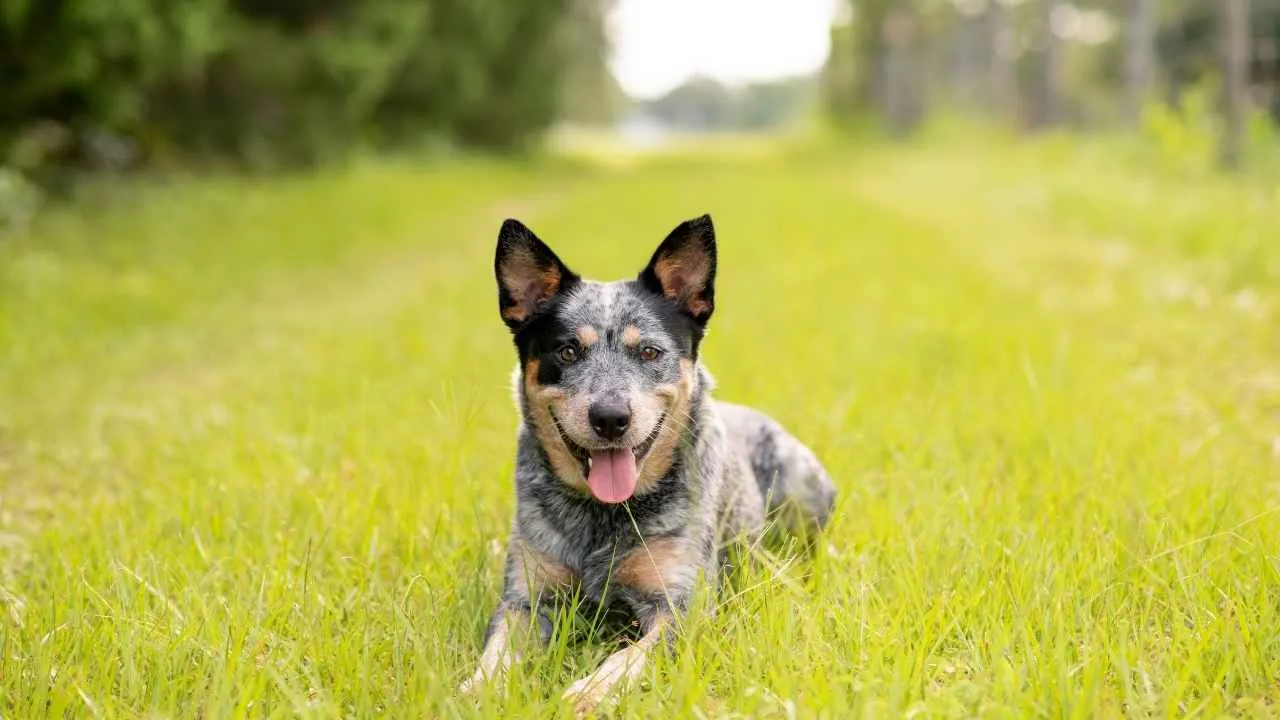
With a history rooted in herding cattle across Australia’s sun-soaked landscapes, this breed thrives on physical activity and outdoor adventure.
Their muscular build and boundless energy make them naturally suited to navigating rugged trails, steep inclines, and long treks under the sun. Always alert and eager, they’re happiest when given a job, and hiking fits the bill perfectly.
Care Needs
Australian Cattle Dogs require a high level of daily exercise and mental stimulation to stay balanced and content. Long hikes, agility drills, and active play are essential parts of their routine.
Their short, dense undercoat paired with a weather-resistant outer coat helps regulate body temperature in both hot and cold environments, making them highly adaptable. While they enjoy time outside, they also crave close companionship and can form deep bonds with a single person.
Fun Fact: Australian Cattle Dogs were bred for endurance in hot, arid conditions, giving them a natural advantage in warm-weather adventures.
9. American Foxhound

Built for endurance and raised to roam, the American Foxhound is a natural fit for long hikes in hot climates. This sleek, athletic breed was developed in the U.S. for hunting and tracking, boasting remarkable stamina and a strong work ethic.
Its lean build and short, low-maintenance coat allow it to stay cool more efficiently than heavier, double-coated breeds, making it a reliable companion for warm-weather adventures. Their friendly, affectionate nature also makes them ideal for families who enjoy the outdoors together.
Care Needs
These hunting dogs thrive on vigorous daily exercise and benefit greatly from activities like trail hiking that engage both mind and body. At least 30 minutes of aerobic activity is essential to keep them mentally stimulated and physically satisfied.
While they tolerate hot climates well, hydration and rest breaks are important during longer outings to prevent overheating. These dogs do best in environments where they can move freely and explore, and even senior Foxhounds require modified but consistent exercise to stay healthy and happy.
Fun Fact: Bred for hunting, these friendly dogs can spend hours traversing rough terrain—whether it’s a wooded trail or sandy beach, with impressive endurance.
10. Dalmatian
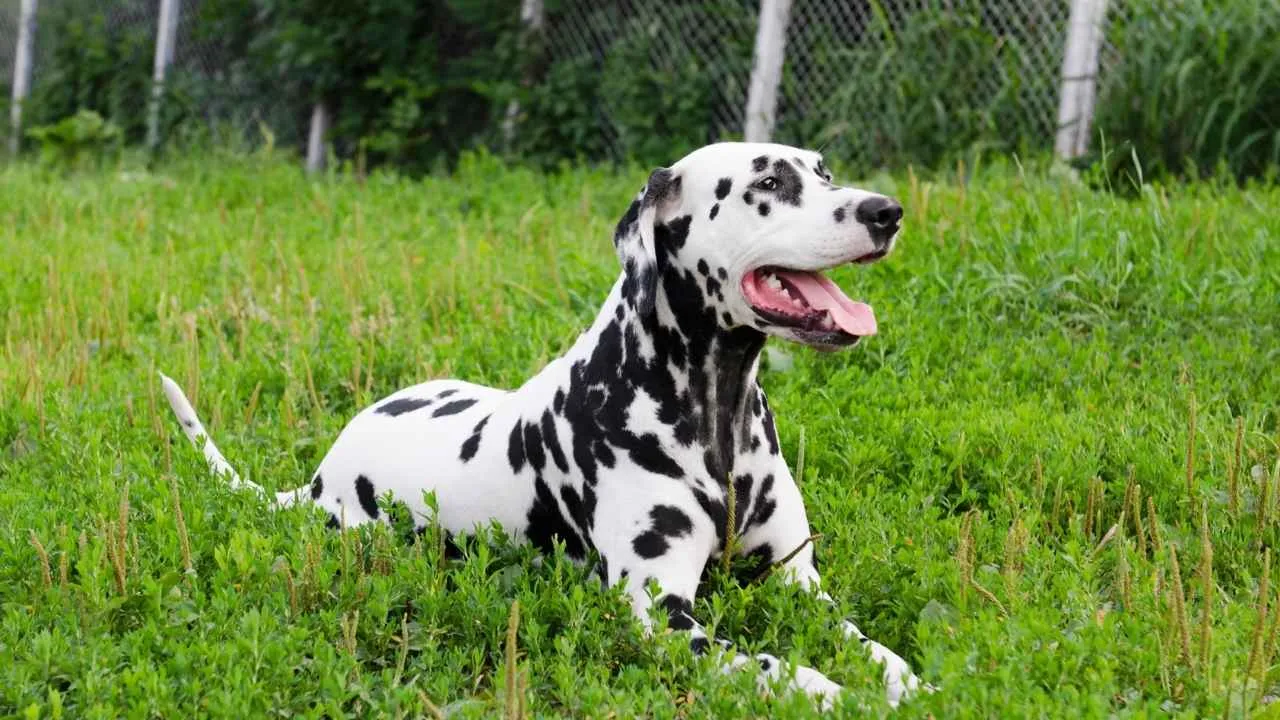
With their iconic spots and athletic build, Dalmatians are naturally equipped for life under the sun. Originally bred to run alongside carriages, these high-energy dogs have the stamina and heat tolerance to make excellent hiking partners in warm climates.
Their sleek, muscular frames and minimal body fat allow them to cool down quickly, while their short fur and sun-reflecting white fur help them stay comfortable even on hot trails.
Care Needs
These hot-weather dogs thrive on daily physical activity and need consistent mental stimulation to stay balanced. While adult Dalmatians are well-suited for long hikes, puppies under six months should avoid strenuous exercise, as their joints and bones are still developing.
Instead, young pups benefit from casual, free play until they reach 18 months of age, when formal conditioning becomes safer. During warm-weather outings, always ensure your Dalmatian stays hydrated and takes breaks in the shade to prevent overheating.
Fun Fact: Dalmatians were originally bred as carriage dogs, prized for their endurance, speed, and ability to keep pace over long distances, even in hot conditions.
Conclusion
When choosing a trail buddy for hot-weather hiking, it’s essential to consider a breed’s natural tolerance for heat, energy level, and physical build. Dogs like the Australian Cattle Dog thrive under the sun thanks to their endurance and double coat designed for outdoor work. Other athletic breeds such as the German Shorthaired Pointer, Jack Russell Terrier, and Labrador Retriever also perform well in warm climates, thanks to their stamina and love for physical activity. These dogs are no couch potatoes; they were bred to move.
While breeds like the Australian Shepherd and Border Collies are also excellent hiking partners, it’s important to manage their high energy and vocal tendencies on the trail. Even dogs with a wavy coat, like the Golden Retriever or Chesapeake Bay Retriever, can handle warm hikes with proper hydration and rest. With the right preparation, these breeds aren’t just companions; they’re dedicated trail partners who thrive under the sun and make every outdoor adventure unforgettable.


